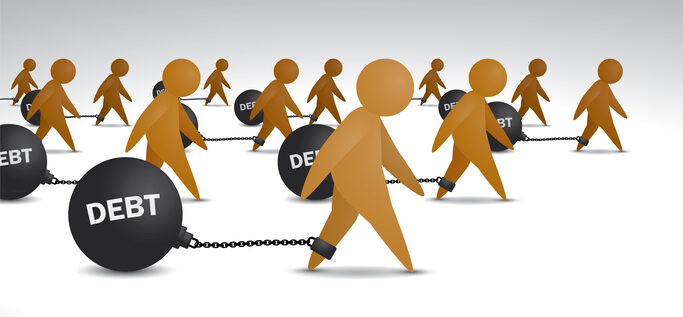Review of The Debt Trap: How Student Loans Became a National Catastrophe, by Josh Mitchell (New York: Simon & Schuster, 2021) 261 pp.
We are all aware of rising student debt, which now exceeds $1.6 trillion in the United States, dwarfing credit card debt ($930 billion). Although student loan totals have been growing for decades, only recently has their human toll been widely discussed, leading to calls to forgive debts and make some college tuition-free.
“Student debt has shaped how Americans live, work, and form relationships,” writes Josh Mitchell in his new book, The Debt Trap. Young people are delaying home ownership, putting off marriage, avoiding starting businesses, and failing to save for retirement, he says—all because they are trying to pay off their student loans.
Mitchell is a Wall Street Journal reporter. The book’s subtitle is “How Student Loans Became a National Catastrophe,” and Mitchell’s job is to tell the complicated story. Federal guarantees of student loans began in 1965, when the Higher Education Act was passed with the enthusiastic endorsement of President Lyndon B. Johnson.
It is a grim story and in many ways familiar: a long, slow process by which politicians, government bureaucrats, and private businesses pursued their narrow interests while failing to acknowledge the logic and warnings that foretold disaster. Supporting it all was the public, ignorant of the details but eager to send their children to college.
In fact, the “debt trap” is a classic “Bootleggers and Baptists” story. I refer to economist Bruce Yandle’s vivid description of how public policies are often made. To wit: there is a policy that pleases the public—in his analogy, a mid-twentieth-century ban on selling alcohol on Sundays in the South—which is supported by “the Baptists.” There are also special interests that benefit behind the scenes—“bootleggers,” who have an exclusive market on Sunday for illegal drinks if the ban is adopted. The two groups form a coalition, albeit an unwitting one (at least on the side of the Baptists).
In a parallel way, the student-loan debt trap took shape through a coalition involving public cheerleading (“Baptists”) and numerous special interests, public and private (“bootleggers”).
Mitchell deftly contrasts the victims’ heartbreaking stories with the images of confident, self-satisfied government officials and private bankers. Yes, the borrowers made mistakes—a careful analysis would have told them their post-college jobs probably would not earn enough for them to pay off the loans.
But many were young and optimistic, and who was there to hold them back? Politicians claimed, and probably believed, the programs were making it possible for more people to join the middle class, while the banks and a newly formed quasigovernmental intermediary, the Student Loan Marketing Association (Sallie Mae), made lots of money, risk-free.
Colleges and universities were among the villains (i.e., special interests), too. Writes Mitchell: “Far from making college more affordable, student debt enabled schools to raise tuition faster than family incomes, creating a higher-educational industrial complex that has driven up the price of college and graduate school to unprecedented levels.”
The link between government-backed student loans and the steady increases in college tuition is an important part of Mitchell’s story, one that he sees as obvious. However, although academic analysts have leaned in that direction, some have been reluctant to say conclusively that federal loans caused tuition to rise inexorably. (See the “Bennett hypothesis.”) Mitchell, however, is persuasive.
There are many twists and tangles to the buildup of student debt and the consequences for debtors. Consider one complication: the ban on bankruptcy.
When student borrowers get in over their heads, their suffering is compounded by the fact that—unlike virtually all other debt—student loans cannot be erased (“discharged”) through bankruptcy. How did that happen?
Let’s begin with the bad old days, when student loans were rare and not backed by the federal government. They were rare because banks had trouble being sure they would be paid back. Furthermore, at that time, borrowers who couldn’t pay could declare bankruptcy. Although some shame accrued, bankruptcy offered a way to obtain protection from creditors and start life over again.
In the 1970s, Mitchell says, Congress began to notice student loan defaults.
“Congress believed bankruptcy created an incentive for borrowers to discharge debts that they’d easily be able to repay as they progressed in their careers,” Mitchell writes. So, in 1976, Congress made bankruptcy much more difficult for student borrowers. A person could seek bankruptcy only after he or she had made regular payments for five years—or experienced “undue hardship” (Congress did not specify what undue hardship meant).
That made it more difficult to erase the loans. In 1998, however, the law was changed again. Only “undue hardship” was left as a possible standard, and judges defined it very strictly.
“Discharging student loans became nearly impossible,” writes Mitchell. “Few borrowers tried to declare bankruptcy, knowing the standard was so high.” They had to keep on paying, or their wages could be garnished.
There is much more in the book, from steps such as President Obama’s “income-based repayment” plan, which lowered payments but increased the total debt, to a personal relationship between a Sallie Mae lobbyist and a congressman that helped expand the loan program. Mitchell also offers some good recommendations for fixes.
The biggest value of this book, however, is to make us realize how serious the student debt problem is and how we got here.









[…] Read the original article on Heartlanddailynews.com […]
[…] READ MORE ON HEARTLAND.ORG SITE. […]
[…] [2] Josh Mitchell, The Debt Trap (New York: Simon & Schuster, 2021). Reviewed here. […]